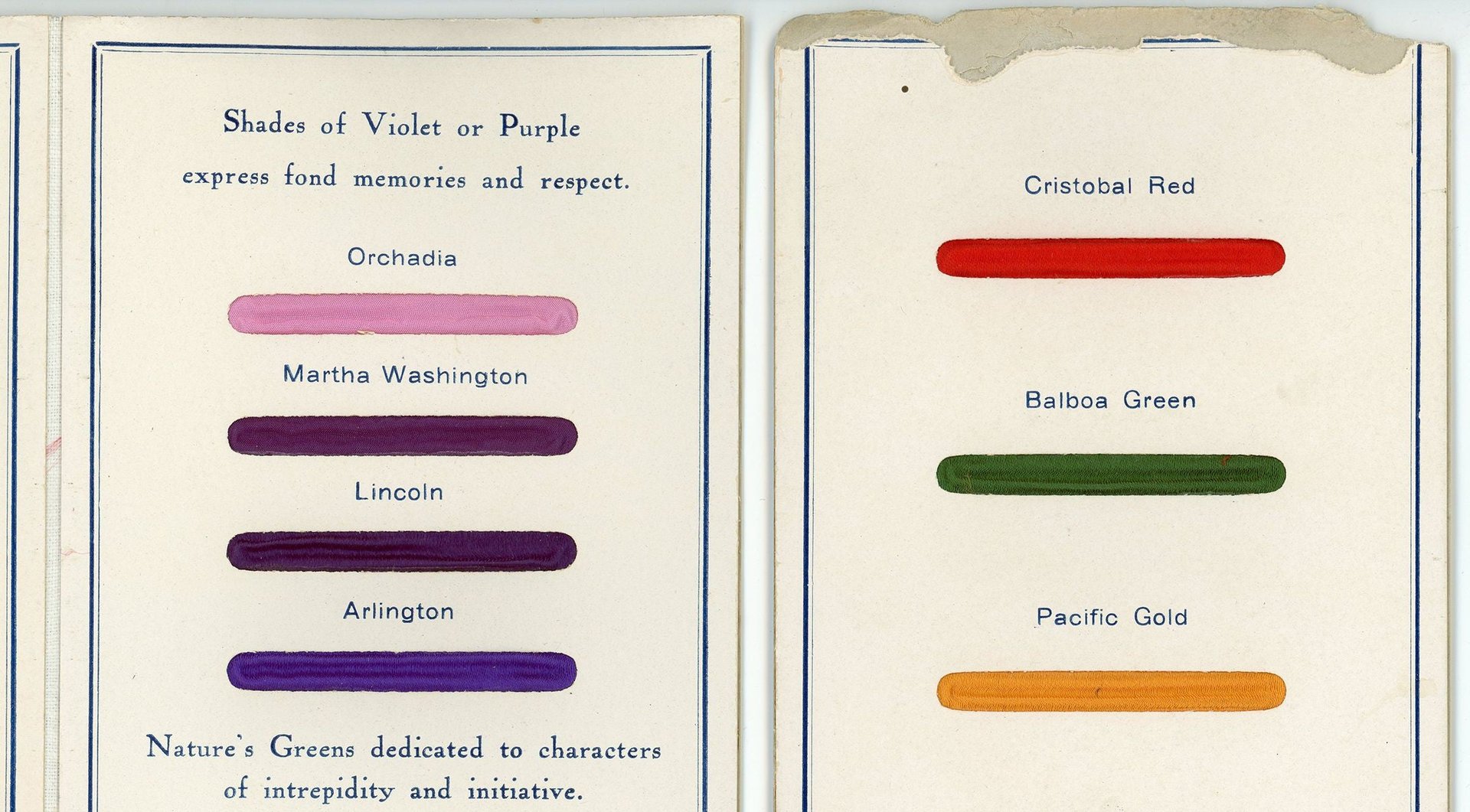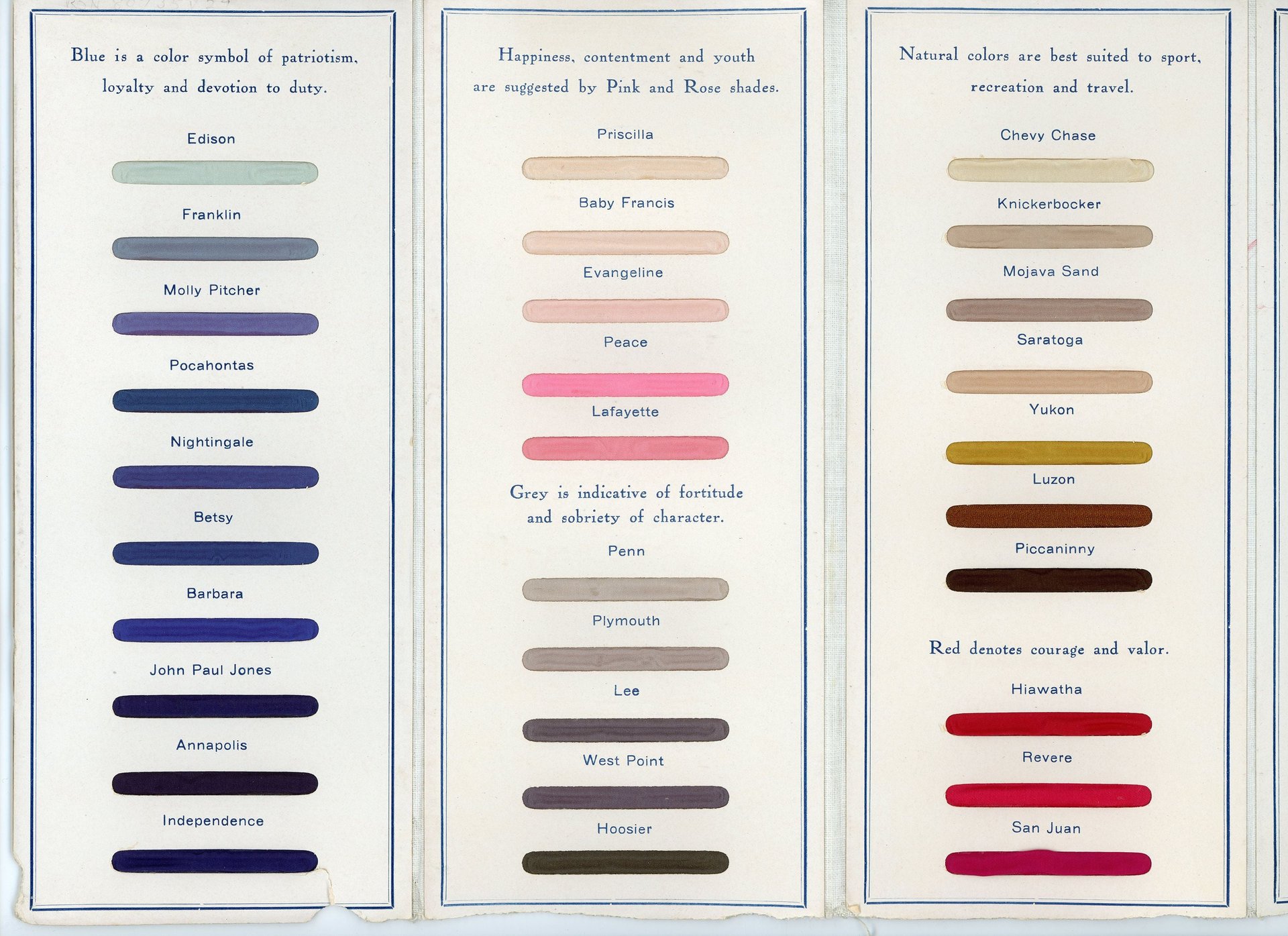If famous Americans were colors of the rainbow, here’s what they’d look like
A century before Pantone made Serenity or Essie did Cocktail Bling, John Wanamaker invented Independence Blue.


A century before Pantone made Serenity or Essie did Cocktail Bling, John Wanamaker invented Independence Blue.
World War I had just begun, and Wanamaker, a US department store owner, seized the moment to transform colors into political statements. In 1915, he created “America’s First Color Card,” a patriotic palette for silk dyes.
“It is strange that no one ever thought of originating this color before,” Wanamaker told The American Silk Journal in 1915, of his proprietary navy. “It is created entirely from the three colors used in the American flag. We took the red in the stripes, the blue in the field of stars, and the white in the stars and stripes, each in its own proportion, mixed them together in the dye, and behold, we had Independence Blue.”

Among the other colors are Martha Washington (a plummy purple), Edison (eggshell blue), Hiawatha (crimson), and somewhat inexplicably, Baby Francis (dusty pale pink).
“America’s First Color Card is dedicated to the women of the New World,” claims the introduction on the color card, offered in Wanamaker’s New York store. ”There is a language of color. A color without its name will speak its name.”
Although the authors of The Dry Goods Guide contested Wanamaker’s first-to-market claim, they couldn’t argue with his marketing savvy.

According to the Smithsonian, blockades against German dye manufacturers during World War I created a dye shortage soon after Wanamaker introduced his color card. The shortage catalyzed a new industry of color creation and a penchant for black-and-white patterns, while setting the stage for color standards company Pantone to eventually standardize—and sell—just the right shade of blue.